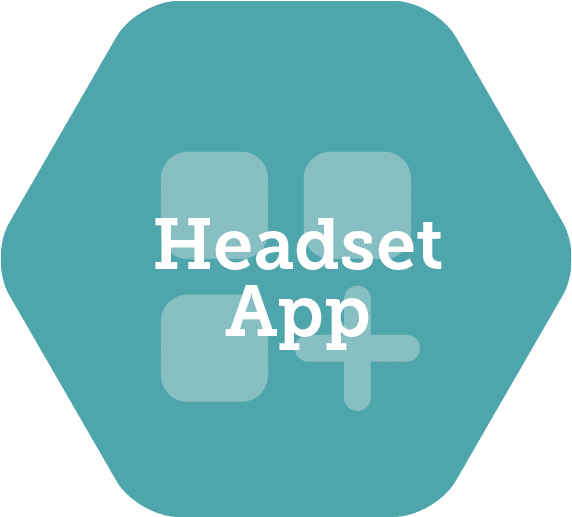Picture this scenario for training essential workers:
You are an essential worker. You have a daily routine that involves gearing up in your personal protective equipment (PPE) to complete your assigned tasks and keep yourself and others safe.
One morning, you arrive to work and notice that your regular PPE gear is different than the day before. You wonder, does the mask seem larger? Is that an extra band attached? Is there an additional latch on the face shield?
You remember a notification indicating that PPE may update from time to time to ensure workers had the safest options available, but no specific “training” was announced.
If you were faced with this situation, how would you move forward? Would you search the web and try to match the new items with the images that come back? Would you call your manager or organizational learning partner for clarification? Would you just wing it on your own?
Training essential workers: Mobile AR puts necessary training in the hands of every worker
Much like this hypothetical situation, we face similar challenges in the current pandemic. PPE equipment and the coinciding procedures may have to update quickly. As we learn more about the COVID-19 threat, our response, safety guidelines, and employee protections must adjust. The first to see these adjustments will be frontline workers.
How do we streamline the delivery, effectiveness, and accessibility of that critical changing information? One way to meet this PPE training need is with augmented reality (AR).
AR can be used in learning design to curate content and deliver real-time information in the moment of need. Content curation is the gathering of outsourced or internal information related to a topic and organizing it into a coherent collection. Curated content is easy to navigate and relevant to the task at hand.
Effectively organized content is a direct enabler to addressing the moment of need. Designing for the moment of need, in this case, is when learners require information about a subject or skill while performing a specific task. The idea behind a moment of need resource is to minimize learner downtime and provide seamless access to easily digestible content that helps them solve problems in real-time.
In the case of the frontline worker that found the daily PPE to be different, at that moment, they required additional information or reinforcement. Instructional designers or trainers can develop AR resources to help. The AR experiences could include videos, 3D models, a checklist, or curated links to existing content provided by the manufacturer.
The time and resources used to create or curate this content into an AR experience would be minimal, and any updates would be delivered in realtime. For example, updates to a webpage would be refreshed in an AR experience as soon as you publish. The next time someone accesses the AR experience, the latest content is displayed. The AR experience serves as the delivery conduit between content and user.
Typical use cases for AR include interactive games and marketing, leading us to assume complexity or intricate graphics are also required. AR can be those things, but it can also be simpler.
Using AR to provide accurate and relevant information when training essential workers, allows access to critical information just in time by simply scanning a QR code, an image, or the item itself. The AR experience is activated and the content is curated in a meaningful way, providing immediate answers and guidance on how to properly use the new equipment. Using AR this way eliminates the need to print additional materials – saving money and time – and significantly reduces the risk of outdated information.
Beyond this example, we need to be exploring meaningful ways to leverage AR and other immersive reality solutions for learning and development? The potential they have in learning and development goes beyond how we are using it today. Current uses are not always the best fit for L&D. As practitioners in learning design, it falls on us to find innovative uses. At the same time, we need to ask ourselves how immersive technology like AR or VR can be an effective replacement for the existing tools we have available. For the future of our learners and the evolution of our craft, we need to more thoroughly explore how this technology can assist our blended learning solutions.
In the case of PPE and training essential workers, a blended approach with AR, VR, and/or other curated content fulfills the moment of need our frontline workers face. Going forward we need to keep exploring how it can help with other learning and development challenges.
If augmented reality or virtual reality (VR) training seems like a good fit for your essential workers, please visit motive.io or drop us a line to learn more.
Want to learn more about VR training and how to get started?
Download our guide: VR Training Information and Decision Making Guide.
Latest Posts
Stay in the Know
Want to stay up-to-date with what is going on in the world of immersive training? Subscribe to the Motive Blog.
Ready to revolutionize your training program?
We’re ready to show you how seamlessly you can create, edit and deploy VR training modules. Our team is standing by to help you revolutionize your training program.





